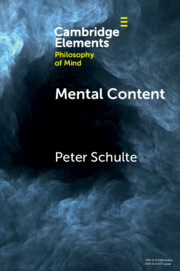Element contents
Mental Content
Published online by Cambridge University Press: 12 August 2023
Summary
Keywords
- Type
- Element
- Information
- Series: Elements in Philosophy of MindOnline ISBN: 9781009217286Publisher: Cambridge University PressPrint publication: 31 August 2023
References
- 15
- Cited by

